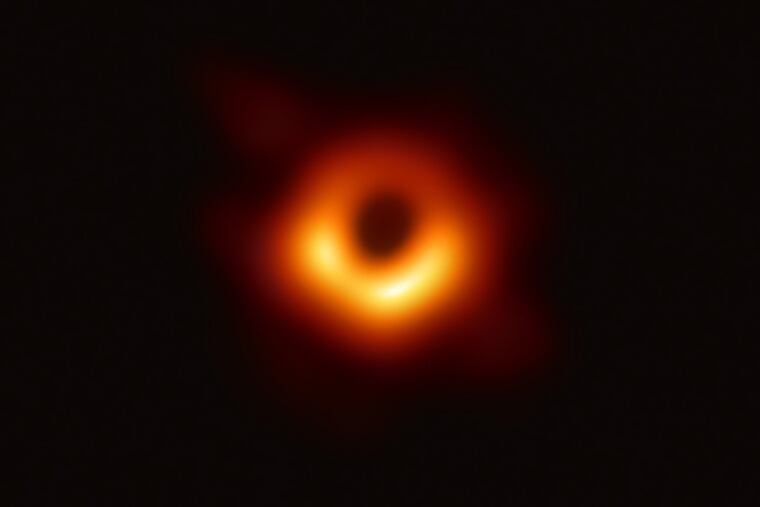Villanova members of ‘black hole’ team earn share of $3 million Breakthrough Prize
The money is being split up 347 ways, with two shares going to a pair of Villanova researchers for their role in capturing the first photo of a black hole.

What do you get when you divide $3 million by 347? A Villanova University senior is about to find out.
Actually, this student can probably do the math in his head.
Jadyn Anczarski, who is majoring in physics, learned this month that he and assistant professor Joey Neilsen each will get a share of the $3 million Breakthrough Prize in fundamental physics — as two of a 347-member team that captured the first image of a black hole.
Anczarski and Neilsen were part of a group that studied X ray emissions from a “jet” of particles that emerges from the black hole and were not directly involved in getting the image of the black hole itself. But still, they are feeling pretty starstruck.
“It was an amazing achievement for the team,” Neilsen said.
The award for the black hole project — formally called the Event Horizon Telescope Collaboration — is one of seven Breakthrough Prizes to be given to scientists in various fields at a Nov. 3 ceremony.
Other winners include Virginia Man-Yee Lee, a neuroscientist who studies Alzheimer’s and other brain diseases at the University of Pennsylvania’s Perelman School of Medicine.
Now in their eighth year, the prizes are funded by Google cofounder Sergey Brin; Facebook cofounder Mark Zuckerberg and his wife, physician-philanthropist Priscilla Chan; Tencent founder Ma Huateng; tech investor Yuri Milner and his wife, Julia; and 23andMe founder Anne Wojcicki.
Lee wins $3 million all by herself, whereas Anczarski and Neilsen, like all the other Event Horizon team members, each will receive 1/347th share of the physics prize — about $8,645.
Not that they are complaining. Neither had any idea the team was up for the prize.
Anczarski said the bigger reward was getting to work on such a prominent project as an undergraduate.
“It shows how a whole-world collaboration can accomplish such a seemingly impossible task if we work together,” he said.
» READ MORE: For the first time, scientists harness ‘ghost particles’ to study the universe and its black holes
A native of Ringtown, Pa., north of Reading in Schuylkill County, Anczarski described the Villanova physics department as “close-knit,” with the result that students have ample opportunities to conduct research with professors.
He and Neilsen were part of a group that analyzed emissions of the black hole’s jet by using NASA’s Chandra satellite-based observatory. Anczarski did much of his analysis in the summer of 2018, before his junior year.
The results are helping scientists to determine what causes the black hole’s jet to form.
The black hole in question, located in the galaxy M87, is thought to have gotten its start with the collapse of a very large star, eons ago. It has a mass that is 6.5 billion times that of the sun, and as a result, it exerts an enormous gravitational pull on anything near it. So how does a jet of particles travel away from it?
The theory, Neilsen said, is that as plasma and gas are sucked into the black hole, magnetic fields become twisted in such a way that they somehow propel a jet of particles away from the black hole at tremendous speed.
“It’s sort of like a drain with a fountain in the middle,” the physicist said.
The project is continuing and Neilsen is optimistic that future results will be even more impressive.
“As scientists, we never consider our work to be done,” he said. “It’s going to keep getting better as we go.”